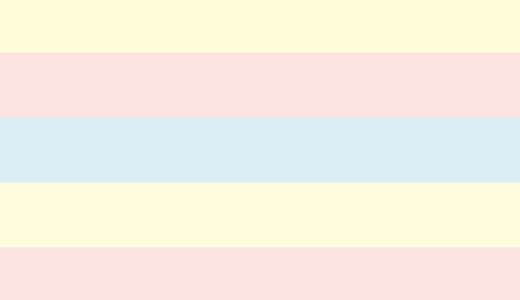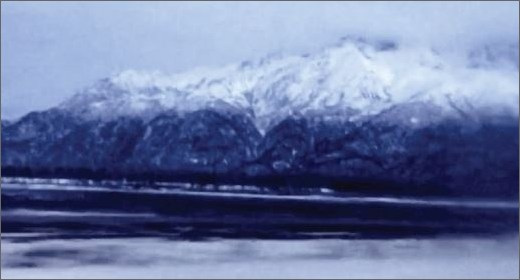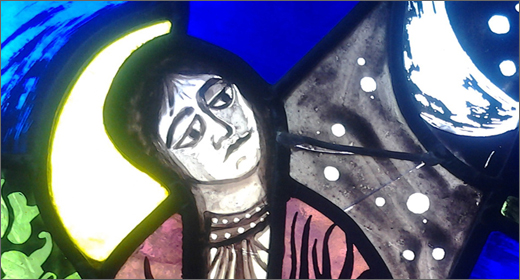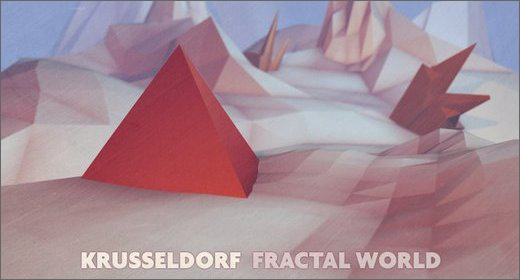Ambient, gentle, and dreamy instrumental compositions commissioned for the original soundtrack to Agnes Martin: With My Back to the World, a documentary about the iconic abstract painter (1912-2004) which was directed by Mary Lance and released in 2002 on New Deal Films.

The feeling is consistently slow and meditative
Ambient, gentle, and dreamy instrumental compositions commissioned for the original soundtrack to Agnes Martin: With My Back to the World, a documentary about the iconic abstract painter (1912-2004) which was directed by Mary Lance and released in 2002 on New Deal Films. Steve Peters lives in Seattle, check out his project Wayward Music Series.
“I make music and sound using field recordings, acoustic instruments, found/natural objects, electronics, and voices. Much of this work is site-specific or place oriented. My hope was to not only evoke the feeling of Martin’s work but also the landscape of northern New Mexico, with a nod to the region’s musical traditions. A balance of the sublime and the rustic. Simple beauty with rough edges. Thank you for listening.“
Overall, the feeling is consistently slow and meditative, telling a story about the artistic journey of Agnes Martin using sustained notes that are complex with overtones and delicate subtlety. The string pieces were created in collaboration with viola player Ben Daitz, who improvised over the guitar parts, though the latter are not always included in the final mix. The cover image was created by Michael Motley.
As this project concerns the life of Agnes Martin, some biographical notes are helpful. Martin was born in Macklin, Saskatchewan, in 1912, into a Calvinist household and lived briefly in Calgary, Alberta. She then moved with her family to Vancouver when she was around seven years old. In 1932, at age twenty, she moved to the USA to help her pregnant sister, Mirabell, in Bellingham, Washington. She completed her education there, to emerge as a very unique and remarkable artist. It was while living in New York that Martin became interested in modern art and was exposed to artists such as Arshile Gorky (1904–1948), Adolph Gottlieb (1903–1974), and Joan Miró (1893–1983). She took a multitude of studio classes at Teachers College and began to seriously consider a career as an artist.
Known for her subtle abstract paintings of grids and lines ::
Martin is best known for her subtle abstract paintings of grids and lines, which at first glance may look like hand-drawn ledgers, on a square canvas or paper of consistent size and material, divided horizontally or vertically, or both, by a grid-like structure. The grid was a vehicle for her to make paintings that were completely without form, many debates surrounding the nature of her enigmatic abstract canvases and her idiosyncratic lifestyle. She wrote, “My paintings have neither object nor space nor line nor anything – no forms. They are light, lightness, about merging, about formlessness.”
“My paintings have neither object nor space nor line nor anything – no forms. They are light, lightness, about merging, about formlessness.” ~ Agnes Martin
In the late 1950s Martin had moved to New York City. Diagnosed as a paranoid schizophrenic, she had more than one breakdown while there. She left in 1967, packing up her things and going on the road for 18 months. She eventually settled in New Mexico, where she found peace in reducing the distractions of daily life. In some of her writings and interviews, Martin often cited the influence of Asian traditions. “My greatest spiritual inspiration came from the Chinese spiritual teachers, especially Lao Tzu,” she once said. Lao Tzu has been generally accepted as the author of the famous Tao Te Ching and founder of Taoism. She would also mention the influence of Buddhism, especially the Zen branch.
“I paint with my back to the world,” what she wanted to portray with her art was not the Earth and its forms of material existence, but rather the abstract glories of being: joy, beauty, innocence; happiness itself. Ever expanding layers of accordion drones and throbs, “With My Back to the World” (4:43), this track is a remixed edit of “Ancestral Memory,” originally composed for a dance by Lane Lucas and released on the 2007 album Occasional Music.
What I see when I look at the work of Martin is a set of horizontal and vertical lines drawn with a ruler and pencil on canvases that are six feet high and six feet wide, forming a grid. Everything is almost the same, and yet out of this arises an expression, perhaps the object of painting is to represent concretely our most subtle emotions.
Beyond seeing herself as an Abstract Expressionist, Martin recognized her art as part of a “classic tradition” that included Coptic, Egyptian, Greek, and Chinese art. When she painted what she saw in her mind, this connected her to the traditions of the past.
A mysterious sound, “Fallen Victories” (1:15), was made using an electric guitar, it sounds like a harmonium, but without the characteristic pumping sound. Followed by a melody or fragments of a melody, forming an impression of misty mornings and distant mountains, and the Pacific Ocean, “Vancouver” (2:06), featuring Ben Daitz, on viola recorded by Sid Fendley at Mountain Road Recording in Albuquerque. With a western feeling, “Taos” (2:07) is played on a steel string guitar, slowly considering the landscape of dry mountains and baked desert land, full of life and prickly heat.
In 1957, Martin moved to New York and specifically to Coenties Slip, where a small enclave of artists had taken up residence in abandoned ship lofts on the eastern shore of Lower Manhattan in the 1950s. Coenties Slip is mentioned in the opening page of Herman Melville’s Moby Dick: “Circumambulate the city of a dreamy Sabbath afternoon. Go from Corlears Hook to Coenties Slip, and from thence, by Whitehall, northward. What do you see? …“
Coenties Slip was home to a group of young and predominantly gay artists – including Jasper Johns, Robert Rauschenberg, Robert Indiana and Ellsworth Kelly – who were bent on differentiating themselves from the more macho established abstract expressionists uptown. Martin felt at ease and at home in this place of experimentation and monastic discipline, of “humor, endless possibilities, and rampant freedom.” The track “Coenties Slip” (1:31) is expressed (again) via electric guitar and is sad and mysterious.
An accordian drone that progressively expands, “Dark Trees” (2:50) is a remix extracted from “Hymn to the Crescent,” originally composed for a dance by Kerry Ryan, as is the track “Grid.” Martin makes very explicit connections between solitude, privation and perfection in art: “In these moments. . . we wonder why we ever thought life was difficult.” Her images of absolute calm possibly originated from her personal turbulence, solitude and hardship. “Solitude” (2:56) features an electric guitar (with that harmonium sound) very slowly expressing calm confidence.
A slow moving meditation on the painting’s subject matter ::
Erin Clotworthy-Joosse & Melissa Schussler-Paz are the voices heard here, “Mesa & Plane” (1:42), a remixed edit of “Circular Lullaby,” originally composed for a dance by Erin Clotworthy-Joosse & Melissa Schussler-Paz and released on Occasional Music.
Opening slowly and employing a glowing and air-driven drone-like melody, “Dark River” (5:45) creates an atmosphere of deep waters, seen from above and felt in a contemplative way. “Dark River” and “Milk River” were composed for this film but were previously mixed as a single piece and released as “Two Rivers” on Occasional Music.
The grid was a vehicle for her to make paintings that were completely without form, Martin did not intend for her work to be about the formal qualities of the grid. “Grid” (6:39) is a dreamy accordion joined with an wooden slot drum, ocarina and visited by a distant penny whistle. This track, “Grid” is also a remix (same origin as “Dark Trees”) extracted from “Hymn to the Crescent,” and was originally composed for a dance by Kerry Ryan.
While discussing her painting Milk River, 1963, Martin wrote: “Cows don’t give milk if they don’t have grass and water. Tremendous meaning of that is that painters can’t give anything to the observer. . . . When you have inspiration and represent inspiration, the observer makes the painting.” This track was previously mixed as a single piece and released as “Two Rivers” on Occasional Music, “Milk River” (2:08) and uses an electric guitar to create a slow moving meditation on the painting’s subject matter.
Guitar picking and strumming, like a folk song instrumental, “Leaving Town” (2:04) breaks up the slow ambience with a brief sense of relocation and hopeful destinations to discover.
The remaining tracks are short instrumental studies portraying different geographical impressions. “Taos (Duet) (1:15) features guitar and viola with a sad southwestern presence. “Vancouver (Duet) (0:44) features a dialog of strings; “Abstract Emotions” (2:20) is a viola solo, and “Solitude (Trio)” (3:27) features electric guitar with two violas added.
Consider what Agnes Martin experienced, pioneering a very unusual form that she repeated again and again to discover new territory within that focused structure. According to art critic Rhea Anastas, Martin understood that her work expressed an “innate psychic realm as opposed to a formalist, rationalist sphere.” Martin expressed that “My interest is in experience that is wordless and silent,” she wrote in 1974. “And in the fact that this experience can be expressed for me in artwork, which is also wordless and silent.”
In 1997, Martin was awarded the Golden Lion for lifetime achievement at the Venice Biennale, and the United States National Medal of Arts in 1998, and she received Canada’s Royal Academy of the Arts Award in 2004.
“If you wake up in the morning and you feel very happy about nothing, no cause, that’s what I paint about—the subtle emotions that we feel without cause in this world,” Martin says of her works. “And I’m hoping that people, when they respond to them, will realize that. . . their lives are broader than they think.”
With My Back to the World is available on Bandcamp.



















![Luke’s Anger :: Ceiling Walker EP (Love Love) — [concise]](https://igloomag.com/wp/wp-content/uploads/2025/04/lukes-anger-ceiling-walker-vinyl_feat-75x75.jpg)

![Ndorfik & madebyitself :: Solos EP (People Can Listen) — [concise]](https://igloomag.com/wp/wp-content/uploads/2025/04/ndorfik-madebyitself-solos_feat-75x75.jpg)





